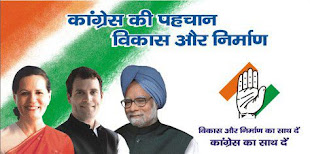Ashok Handoo
A leading economic think-tank, the Centre for Monitoring Indian Economy (CMIE), has estimated that the Indian economy is set to grow at 9.2 percent in the current financial year. This is much higher than the estimates made both by the Government and the Reserve Bank of India. The CMIE says its estimates are based on its expectations of better performance in the industrial and allied fields, as well as agriculture. It however puts a rider that monsoons must behave this year.
The assessment is in conformity with the preliminary data released by the government. The Finance Ministry suggests an 8.9 percent growth in the first quarter of the current financial year. This will be .3 per cent higher than that registered in the previous quarter, ending March 2010. The industry recorded a 17.6 percent growth in April which is almost equal to the 20 year record of 17.7 percent in December 2009. This robust growth is seen in both capital goods and consumer durables.
Exports registered a growth of 35 percent in May touching $16.1 billion mark. However, imports too recorded a rise of 19.8 percent to $27.4 billion, leading to a trade gap of $11. 3 billion. In April also, exports rose by about 35 percent. All this makes a case for optimism. Some economists describe the present status of Indian economy being in a “sweet spot.” They characterize it as less volatile with a sound financial sector.
There are concerns on inflation and fiscal deficit front. The May figures put the inflation rate at 10.2 percent. This needs to be tackled, though it can not be done overnight. The Government is dealing with the situation in a calibrated manner, both on the supply side as also on the demand side. The RBI has raised the key rates twice this year so far to check food inflation from spreading to manufacturing goods. Fortunately, the food inflation has come down from as high as 20 percent in December last to about 16 percent now. The Reserve Bank is to evaluate the situation on July 27.
On the supply side, the nation has pinned its hopes on a good monsoon this year. The Meteorological department too has predicted a normal monsoon this year. Judging by the performance of the monsoon so far, the prediction seems to be coming out true.
The Government has also allowed duty free imports of some commodities to increase their supply in the market.
But at the end of the day, the farm sector will play a crucial role in making it possible to realize the growth targets. Prime Minister Dr. Manmohan Singh’s recent call to raise agricultural production growth from the present 2 percent to 4 percent has to be viewed in this background. The Planning Commission has started working on the 12th Five Year Plan, beginning from 2012 and aiming at a 10 percent growth. This will be in the backdrop of 8.1 percent targeted growth for the 11th Plan. Earlier the growth rate for the 11th Plan had been fixed at 9 percent but had to be brought down in view of the global financial crisis.
One of the reasons of sluggish farm sector growth in the country has been its continued neglect over the years. The last two Plans failed to achieve the desired growth in the agricultural sector. The Deputy Chairman of the Planning Commission, Dr. Montek Singh Ahluwalia agrees that we have to do much more in this field. That the government has now realized this is evident by its recent decision to increase sharply, the minimum support price for agricultural products to make it remunerative for the farmers. Of course it is argued by some that this could push the already high prices of agricultural commodities further up. But that would happen in the short term only. In the long term as farming becomes remunerative, it will increase the supply position and thus bring down prices.
One needs to admit that high inflation is not peculiar to India. China, for instance, recorded a 19-month high inflation in May. But that is no consolation to us. Inflation has to be brought down to the range of 5 percent and the fiscal deficit too has to be cut down sharply.
It is a matter of satisfaction that the Government is confident that it would be able to deliver on both the counts on higher growth and low inflation by the year end and begin the next financial year on a more promising note. If that happens, it will open up new vistas of economic development for the country and its people.


























0 Comments